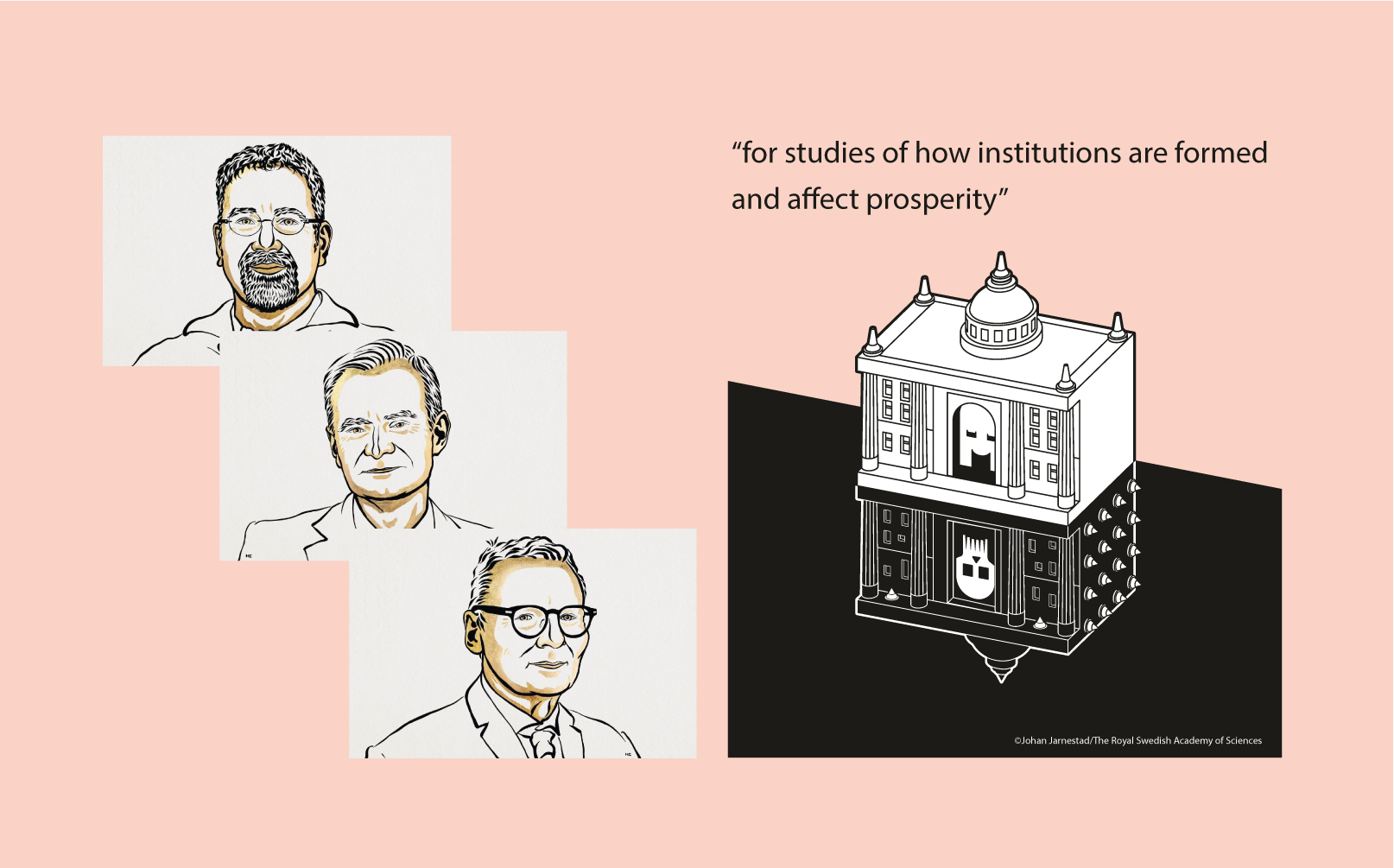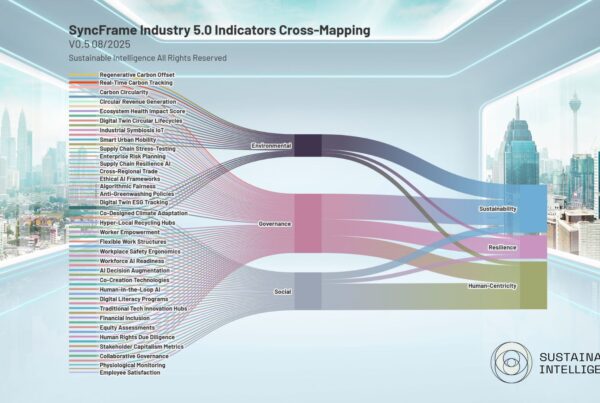The Role of Inclusive Institutions in Economic Prosperity:
Lessons from the 2024 Nobel Prize in Economic Sciences
The 2024 Nobel Prize in Economic Sciences, awarded to Daron Acemoglu, Simon Johnson, and James A. Robinson, underscores the critical role of institutions in determining the prosperity of nations. Their research has revealed that inclusive institutions—characterized by transparent governance, equitable legal frameworks, and effective economic systems—foster long-term growth, while extractive institutions hinder development by exploiting resources for short-term gains.
1. The Role of Institutions in Economic Prosperity
The laureates of the 2024 Nobel Prize in Economic Sciences have illustrated that inclusive institutions are the foundation of economic prosperity. Societies that have established inclusive systems—where legal frameworks, governance, and economic policies promote transparency, equity, and access—have been more successful in achieving long-term growth. Conversely, extractive institutions that concentrate power and resources within a narrow elite lead to underdevelopment and inequality. SyncFrame aligns with these findings by offering a platform that supports the development of inclusive, sustainable, and transparent institutions.
2. SyncFrame’s Integrated Approach to Institutional Development
SyncFrame is structured around four foundational categories: SyncPact, SyncSpark, SyncNest, and SyncZero, each addressing a different aspect of sustainability and institutional governance.
- SyncPact focuses on governance and ethics, providing a standardized framework for transparency, accountability, and stakeholder engagement. This aligns with the Nobel laureates’ findings on the importance of political systems that promote inclusion and transparency.
- SyncSpark targets innovation and R&D, encouraging investment in sustainable technologies and business model innovation. This addresses the need for economic systems that support long-term growth and resource efficiency.
- SyncNest ensures that organizations adopt resilient economic practices, particularly in supply chain management, resource allocation, and human capital development. These aspects are crucial for building institutions that balance immediate economic needs with long-term societal well-being.
- SyncZero emphasizes the reduction of environmental footprints, particularly in carbon emissions, circular economy practices, and decarbonization strategies. This supports the global transition towards low-carbon economies, a critical component of sustainable institutional frameworks.
These categories, collectively, align with the Nobel laureates’ emphasis on inclusive, forward-looking institutions that ensure long-term prosperity by building on sustainability and resilience.
3. Fostering Collaboration Between Private and Public Sectors
The laureates’ research illustrates how inclusive institutions often arise when there is a credible commitment to positive change, which can be difficult in environments dominated by extractive systems. SyncFrame can facilitate collaboration between the private sector, government, and civil society by providing a platform for transparency, data sharing, and consistent reporting. This collaboration is essential for creating the trust and commitment needed to shift towards more inclusive systems. By fostering open communication and cooperation, SyncFrame helps build the foundation for institutional changes that benefit all stakeholders.
4. Strengthening Governance and Policy-Making
Effective governance is fundamental to the success of any institution. SyncFrame’s standards emphasize governance transparency, ethical practices, and stakeholder engagement, providing guidelines that can help build trust between organizations, governments, and the communities they serve. By facilitating consistent and transparent reporting on governance practices, SyncFrame supports policymakers in creating frameworks that discourage corruption and short-term exploitative behavior. This alignment with global best practices ensures that both public and private sectors can adopt models that lead to long-term, sustainable economic growth.
Moreover, SyncFrame’s integration with frameworks such as the TCFD (Task Force on Climate-related Financial Disclosures) ensures that organizations disclose material risks and opportunities associated with climate change. This enables policymakers to enact regulations that encourage sustainable practices while minimizing economic and environmental risks.
5. Enhancing Economic Resilience and Innovation
Acemoglu, Johnson, and Robinson’s research points to the importance of economic systems that enable rather than exploit. SyncFrame promotes sustainable business practices, encouraging companies to invest in innovation, resource efficiency, and long-term value creation. By supporting businesses in developing resilient supply chains, adopting low-carbon technologies, and investing in circular economy principles, SyncFrame contributes to building economic systems that are inclusive and sustainable. This approach not only helps businesses thrive but also aligns with national economic policies aimed at fostering inclusive growth.
SyncFrame’s SyncSpark and SyncNest categories offer critical tools for fostering innovation and ensuring economic resilience. The framework encourages organizations to invest in sustainable R&D, low-carbon technologies, and resource-efficient business models, which are essential for adapting to future challenges, such as climate change and resource depletion.
The focus on long-term innovation pipelines, commercialization prospects, and competitive advantage through sustainability reinforces the laureates’ findings that institutions must evolve to foster both immediate and long-term economic stability. SyncFrame provides organizations with the tools to innovate responsibly while ensuring that their economic models remain viable and competitive.
6. Promoting Socioeconomic Equity and Inclusiveness
The research by Acemoglu, Johnson, and Robinson underscores that reducing global income inequality requires a shift from extractive to inclusive institutions. SyncFrame’s emphasis on Human Capital Development (HC) and Social Well-being (SW) ensures that institutions contribute to the well-being of their workforce and the broader community. By providing guidelines on diversity, equity, inclusion, and human rights, SyncFrame ensures that institutions adopt practices that promote social equity and justice, essential for long-term institutional resilience and societal prosperity.
These areas align with the Nobel laureates’ research, which underscores that inclusive institutions generate economic growth and reduce inequality. SyncFrame supports the creation of equitable institutions by setting standards for fair labor practices, human capital development, and community engagement.
7. SyncFrame as a Tool for Institutional and Economic Prosperity
SyncFrame provides a comprehensive, standardized framework that enables organizations and policymakers to build inclusive, resilient, and transparent institutions. By aligning with global sustainability standards and promoting innovation, governance, and social well-being, SyncFrame contributes to the development of institutions that foster long-term economic prosperity. This aligns with the findings of Acemoglu, Johnson, and Robinson, whose research demonstrates that inclusive institutions are essential for achieving sustainable growth.
The Nobel Prize-winning research highlights the transformative impact of inclusive institutions on national prosperity. SyncFrame, with its comprehensive sustainability standards and collaborative platform, provides a practical solution for organizations and policymakers seeking to build such institutions. By enhancing governance, promoting sustainable business practices, fostering public-private collaboration, and aligning with international standards, SyncFrame helps create the conditions for long-term, equitable economic growth.
Image credit: Johan Jarnestad/The Royal Swedish Academy of Sciences All Nobel Prizes 2024 – NobelPrize.org




